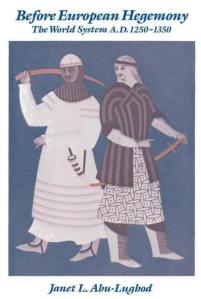As everyone knows, economists and sociologists are the faculty equivalent of cats and dogs. As an economist, I’m more or less brought up to think that sociologists are a bit funny, really, and their models and ways of explaining the world around them good cannon fodder.

Imagine my surprise, then, when I opened this book recently – it having been part of a bulk Amazon order of titles that sounded more or less up my street – and read up on the author… a sociologist! Not only that, the book was twenty years old! Many people will stop now having learnt what I thought would be the only lesson to be learnt from this entire episode: always find out a little bit more about a book before you part money for it. In fact, I think there’s an old English saying along those lines… don’t cover a book with a judge, or something similar.
Anyway, where was I? Oh yes, the book. I decided to do as a Baz would want me to and do one thing that particular day that scared me. Besides, not knowing an awful lot about non-European economic history during the period A.D. 1250-1350 year dot-2008, surely I’d learn something, right?
Sure enough, once I got past the fact that I’d picked out a textbook for a sociology course from the 1980s, I never looked back. The writing is structured, with chapters organised around each on of the 9 spheres of economic activity identified. The paucity of non-European data – which has indeed blinkered somewhat economic historians and cliometricians writing recently – is tackled head-on, rather than ignored. In the style of a true economic historian, she goes on the hunt for proxies to inform the scale and scope of international trade between, for example, the Indian east coast and the South-East straits.
There are a few annoying habits throughout the book – a bit of name-dropping or over-indulgence in highly theoretical or fringe debates, particularly in the notes – but this is an excellent introduction to a fascinating period in world history. Particular points of interest include:
- the analysis of China and its technological advances and wealth of records
- the Middle East, the fascinating Genizah haul from medieval Cairo, and how the ban on usury was overcome by Muslim traders
- and the emergence of Europe from its Roman imperial shadow and taking its place among the world system (before, ahem, re-making the entire system in its own image)
So, while cats and dogs may still not be on best terms, a few more books like this will put paid to Disney’s plans to release ‘Economists and Sociologists’!
Filed under: Reviews | Tagged: 1200s, 1300s, book review, cairo, china, economic history, Economics, genizah, india, middle east, sociology | 1 Comment »

